| 登録情報 | データベース: PDB / ID: 2mh8
|
|---|
| タイトル | GA-79-MBP cs-rosetta structures |
|---|
 要素 要素 | GA-79-MBP, maltose binding protein |
|---|
 キーワード キーワード | PROTEIN BINDING / MBP / maltose binding protein / GA / human serum albumin binding protein |
|---|
| 機能・相同性 | Albumin-binding domain / GA-like domain / GA-like domain / Immunoglobulin/albumin-binding domain superfamily / Helicase, Ruva Protein; domain 3 / Orthogonal Bundle / Mainly Alpha / GA-79-MBP, maltose binding protein 機能・相同性情報 機能・相同性情報 |
|---|
| 生物種 |  Streptococcus dysgalactiae (バクテリア) Streptococcus dysgalactiae (バクテリア) |
|---|
| 手法 | 溶液NMR / simulated annealing |
|---|
| Model details | lowest energy, model1 |
|---|
 データ登録者 データ登録者 | He, Y. / Chen, Y. / Porter, L. / Bryan, P. / Orban, J. |
|---|
 引用 引用 |  ジャーナル: Biophys.J. / 年: 2015 ジャーナル: Biophys.J. / 年: 2015
タイトル: Subdomain interactions foster the design of two protein pairs with 80% sequence identity but different folds.
著者: Porter, L.L. / He, Y. / Chen, Y. / Orban, J. / Bryan, P.N. |
|---|
| 履歴 | | 登録 | 2013年11月19日 | 登録サイト: BMRB / 処理サイト: RCSB |
|---|
| 改定 1.0 | 2015年4月8日 | Provider: repository / タイプ: Initial release |
|---|
| 改定 1.1 | 2024年5月1日 | Group: Data collection / Database references
カテゴリ: chem_comp_atom / chem_comp_bond ...chem_comp_atom / chem_comp_bond / database_2 / pdbx_nmr_software / pdbx_nmr_spectrometer
Item: _database_2.pdbx_DOI / _database_2.pdbx_database_accession ..._database_2.pdbx_DOI / _database_2.pdbx_database_accession / _pdbx_nmr_software.name / _pdbx_nmr_spectrometer.model |
|---|
|
|---|
 データを開く
データを開く 基本情報
基本情報 要素
要素 キーワード
キーワード 機能・相同性情報
機能・相同性情報 Streptococcus dysgalactiae (バクテリア)
Streptococcus dysgalactiae (バクテリア) データ登録者
データ登録者 引用
引用 ジャーナル: Biophys.J. / 年: 2015
ジャーナル: Biophys.J. / 年: 2015 構造の表示
構造の表示 Molmil
Molmil Jmol/JSmol
Jmol/JSmol ダウンロードとリンク
ダウンロードとリンク ダウンロード
ダウンロード 2mh8.cif.gz
2mh8.cif.gz PDBx/mmCIF形式
PDBx/mmCIF形式 pdb2mh8.ent.gz
pdb2mh8.ent.gz PDB形式
PDB形式 2mh8.json.gz
2mh8.json.gz PDBx/mmJSON形式
PDBx/mmJSON形式 その他のダウンロード
その他のダウンロード 2mh8_validation.pdf.gz
2mh8_validation.pdf.gz wwPDB検証レポート
wwPDB検証レポート 2mh8_full_validation.pdf.gz
2mh8_full_validation.pdf.gz 2mh8_validation.xml.gz
2mh8_validation.xml.gz 2mh8_validation.cif.gz
2mh8_validation.cif.gz https://data.pdbj.org/pub/pdb/validation_reports/mh/2mh8
https://data.pdbj.org/pub/pdb/validation_reports/mh/2mh8 ftp://data.pdbj.org/pub/pdb/validation_reports/mh/2mh8
ftp://data.pdbj.org/pub/pdb/validation_reports/mh/2mh8 リンク
リンク 集合体
集合体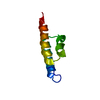
 要素
要素 Streptococcus dysgalactiae (バクテリア)
Streptococcus dysgalactiae (バクテリア)
 試料調製
試料調製 解析
解析 ムービー
ムービー コントローラー
コントローラー



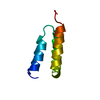
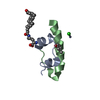
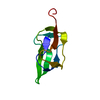
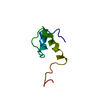
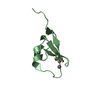
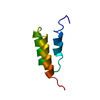
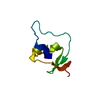
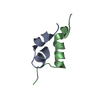
 PDBj
PDBj HSQC
HSQC